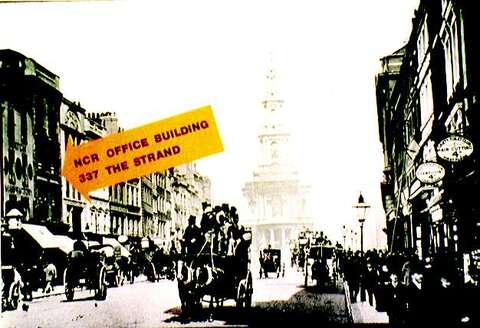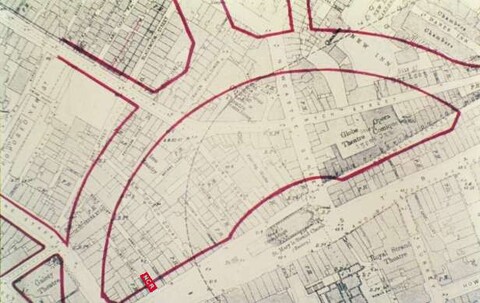- Home
- Introduction
- Website News
- Postscript Magazines
- British History
- Company History
- British History National Cash Register Co. Ltd., 1896 - 1900
- NCR Films
- NCR Vintage Products
- Divisions
- NCR Newscast Tapes.
- Personalities
- The National Cash Register Company Ltd. 1896-1900
- Circuit News - Field Engineering
- Vintage Cash Register Service Aids2
- Supplies

At one side of the office was the entrance to Helmet Court, a narrow dingy alleyway which led from the Strand into a maze of Dickensian type houses and narrow streets. A lease on a warehouse at 6 Helmet Court had been obtained in February 1897
Patterson brought with him an American, who had previously been in charge of the Brooklyn Agency, Mr C.E.Hall. He was made the London manager and two years later European Manager. Mr G.H.Carr succeeded him as London Manager.
Number 337 was a four storey building with a basement which was used for the storage of machines, the ground floor was taken up with showroom and counting house. On the first floor was a mailing room and a room for the office staff. The whole of the second floor was taken up by the mechanics who were eight in number. On the top floor were the workrooms where machines were repaired or re-polished should the wood cabinets have been scratched on their journey from America. Here too was a small room used by the Chief mechanic, Mr. J.H.Best who had the grand title of Mechanical Inspector. He also lived on the premises acting as caretaker.
In 1899 the London County Council notified NCR that they wished to acquire the Strand premises in connection with their massive clearance scheme for the area.
The NCR Property became part of the new Aldwych. In 1903 the Gaiety Theatre was built on the site of the NCR offices. This Theatre was closed in 1939 and was demolished in 1957. English Electric House was built on the site and it later became City Bank House.
The new building selected for the relocation of the office was at 124 Oxford Street .
